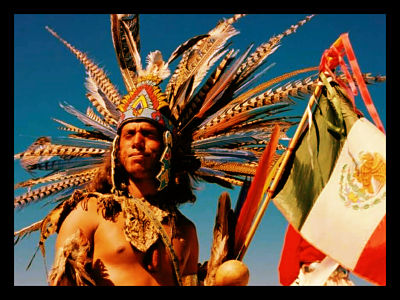5 Ways to Be an Effective Cultural Tourist in Mexico

Cultural tourism is a slippery slope for travelers. Some think that tourism is an industry that contributes greatly to poverty reduction and economic stability in developing nations. Not everyone agrees, however, as many attest that tourism in more rural, traditional areas are catering to tourists, reducing the authenticity of the culture and exploiting locals and their traditions in the process.
One of the most popular tourist destinations is Mexico; tourists flock here from all over the world every year. While Mexico often gets unfairly stereotyped, different areas within the country provide a much different experience. Two of the most popular tourist destinations are Mexico City, one of the largest cities in the world, and the state of Chiapas, where 70% of its people live below the poverty line. Deciding where to visit is a challenging decision, but tourists’ responsibility doesn’t end once they arrive at their destination: it continues until they return home.
When visiting any country — especially a country like Mexico, which changes on a dime depending on the area — there are certain tips to follow in order to be an effective cultural tourist and help support the local economies.
- Eat local. Yes, there is a McDonalds almost anywhere you go in Mexico City, but why eat at a place you can go to every day back in the States? Being in another country gives you the opportunity to experience new things; local cuisine is both delicious and cheap. Try some of the local taco stands. Most are fresh, quite delicious and will be a good economic contribution in the end.
- Learn proper bargaining. While much of what is for sale in Mexico is at a fairly responsible price, it is still a common practice to bargain and is done daily among locals as well. However, don’t haggle too far below the asking price. Tourists should remember that while they want to get the best value for their money, those working in the markets and shops do this for a living and need to provide for their families back home.
- Respect the culture (especially in rural areas). In states such as Chiapas, most of the population is indigenous (ethnic minorities who have been marginalized as their historical territories became part of the state) and have a different way of doing things. Behavior that might be commonplace in the States might not always be accepted as openly by those who are not used to the American way of life. Make sure you ask before you take any pictures of the locals or their children. Many feel that this is disrespectful and inconsiderate. Cameras are also not allowed in church and locals will become very aggressive and demand payment for disrupting their ceremonies.
- Buy goods from local vendors. Although some tourists think that visiting rural areas and buying from locals exploits their culture and dilutes their traditional way of life, the reality is that tourists make contributions that are appreciated greatly. Take time to speak to the locals, especially in lower-income areas like Chiapas. Visitors will often find themselves engaging with people who love what they do. Often the locals work more than one job, selling items on the street while holding down another position in a bigger city to help make ends meet.
- Be careful about the environment: Locals in rural areas appreciate their traditional way of life. Try not to leave articles of yours behind and clean up after yourself. The environment is also very important in rural areas, so to reduce your carbon footprint walk through towns instead of taking a taxi or bus.
Traveling to a country like Mexico is a wonderful experience, one that should be had by anyone who has the chance. In tough economic times, tourists should maximize their time and tight budgets, but also respect the land, culture and environment that they are visiting. These tips should come in handy for the traveler and help stimulate the local economy.
– Taylor Rae Schaefer
Sources: Imagine Mexico, World Nomads
Photo: History Martinez
